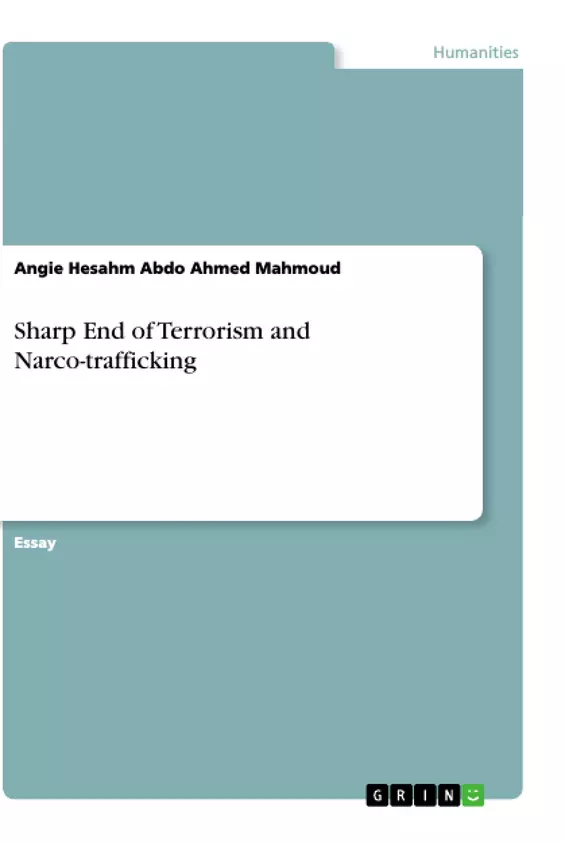The relationship between narco-trafficking and terrorism remains a contentious issue. While some assert that narco-trafficking may be a strong predictor of terrorism, others contest this observation. In this research paper the focus lies on the impact of the Afghan opioid trade on terrorist violence in Central Asia, an area of drug transit states. This research paper and the findings lend support to the argument that narco-trafficking facilitates terrorism, although the substantive impact of the drug trade on terrorist activity is comparatively small. However, it suggests that the drug–terror relationship is multifaceted, complex, and in detail related to the state.The research paper also finds that the links between narco-trafficking and terrorist violence are quite varied, with some defined by direct intersections of violent and criminal non-state actors, while others shaped by deep involvement of the state in the drug trade . Violent non-state entities, including extremist organisations and resistance forces, try to collaborate with criminal networks in order to fund acts of aggression and procure materials for devastation and assassination. Such organisations are involved in the legal economy through real estate, corporations, and other institutions.
The drug-terror thesis points out to the ideological shift between the two organisations but establishes that they mutually benefit from the sheer profit. This research paper supports the claim that drug trafficking induces terrorism, while the direct impact of drug trafficking on terrorist activity is comparatively limited and under-researched.
Inhaltsverzeichnis (Table of Contents)
- Introduction
- The Relationship Between Narcotrafficking and Terrorism
- The Case of Central Asia
- Empirical Evidence of Narcotics and Terrorism
- Findings and Conclusions
Zielsetzung und Themenschwerpunkte (Objectives and Key Themes)
This essay explores the contentious relationship between narcotrafficking and terrorism, focusing specifically on the impact of the Afghan opioid trade on terrorist violence in Central Asia. The essay examines the argument that narcotrafficking facilitates terrorism, exploring the multifaceted and complex nature of this relationship.
- The link between narcotrafficking and terrorist violence
- The role of the state in the drug trade
- Convergence theory and appropriation of operations
- Empirical evidence of the relationship between narcotics and terrorism in Central Asia
- The impact of the Afghan opioid trade on terrorist activity
Zusammenfassung der Kapitel (Chapter Summaries)
- Introduction: This chapter establishes the contested nature of the relationship between narcotrafficking and terrorism, focusing on the impact of the Afghan opioid trade in Central Asia, a region of drug transit states. The chapter argues that narcotrafficking facilitates terrorism, while acknowledging the complexities and nuances of the relationship.
- The Relationship Between Narcotrafficking and Terrorism: This chapter delves deeper into the relationship between narcotrafficking and terrorism, exploring the multifaceted nature of this relationship. It highlights the diverse ways in which these two phenomena intersect, ranging from direct collaboration between violent and criminal non-state actors to the involvement of states in the drug trade.
- The Case of Central Asia: This chapter provides context for the analysis by focusing on the case of Central Asia, a region geographically positioned between Afghanistan and major markets for Afghan opioids. It argues that Central Asia represents a typical case for examining the relationship between narcotrafficking and terrorist violence due to its role as a drug transit region.
- Empirical Evidence of Narcotics and Terrorism: This chapter presents empirical evidence to support the claim that drug trafficking induces terrorism. The analysis focuses on data from Central Asian republics, examining the impact of the Afghan opioid trade on terrorist activity in specific provinces over a defined period. The chapter explores various factors that contribute to this relationship, including the flow of illicit narcotics and the impact of drug seizures on terrorist activities.
Schlüsselwörter (Keywords)
This essay explores the relationship between narcotics and terrorism in a region of drug transit states, focusing on the Afghan opioid trade and its impact on Central Asia. It examines key concepts like "convergence theory" and "appropriation of operations," analyzing the empirical evidence of this complex relationship between illicit narcotics and terrorist activity in Central Asia. The study also examines the role of the state in the drug trade and its impact on the relationship between narcotrafficking and terrorism.
- Quote paper
- Angie Hesahm Abdo Ahmed Mahmoud (Author), 2020, Sharp End of Terrorism and Narco-trafficking, Munich, GRIN Verlag, https://www.grin.com/document/978932



